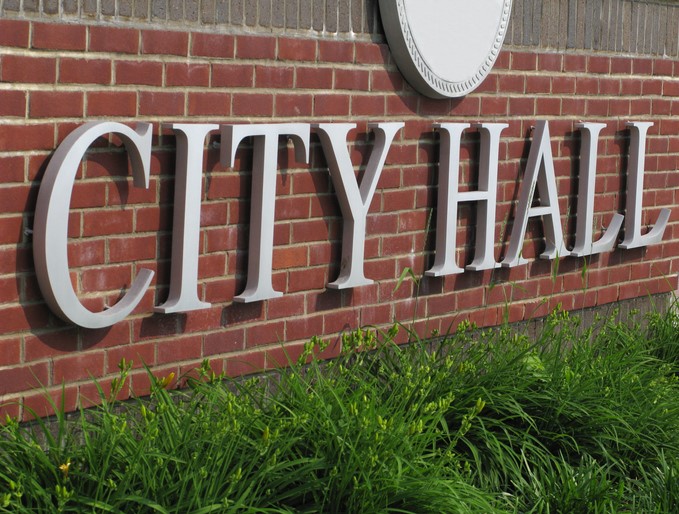If a time traveler from the 18th century dropped in on your municipal meetings, would she recognize them? If you could travel forward in time to the 22nd century, would you recognize their City Council meetings? Probably not. Municipal meetings have come a long way since their humble origins, and they’re changing at the speed of light.
For most of the 18th century, the United States did not have municipal meetings. Only 14 municipal governments existed in 1750, in a mostly rural country. They oversaw wharves and marketplaces in order to protect commercial interests. The early British colonists had no aldermen; if a dirt road in Boston or Providence became too bumpy for a horse to travel safely on, there was nowhere to turn. (Apparently, Providence still faces this problem; a neighborhood there recently threw a birthday party for a pothole.) The US Constitution makes no mention whatsoever of municipal governments.
The few early municipal meetings had a commission structure: A commissioner of public safety, say, would meet with commissioners overseeing other issues; the body they comprised performed all legislative and executive functions. Today, only 1% of American municipalities retain this structure; most follow the Mayor-Council or the Council-Manager template. Today, nearly 40,000 American cities, towns, counties and suburbs have municipal government structures.
The expansion over those 250-plus years took place primarily in the 19th century. Necessity was the mother of invention; dense neighborhoods of wooden houses easily took to flames and facilitated the spread of epidemics. As towns needed firefighters and public health officials, they adopted small governments. Fast forward to the present, and local governments oversee schools, sewage systems, police forces, public health efforts, firefighting and more.
Today, municipal meetings are shifting, with new cultural norms and technologies. Prayer in public meetings is sometimes contested, a possibility unfathomable to the Puritans of the early colonies. Some cities, such as Ontario, are turning increasingly to ombudsmen to mediate constituents’ complaints, keeping disgruntled citizens from dominating municipal meetings.
New modes of communication have been the biggest game-changer in today’s evolving meetings. Much as the printing press democratized literacy and thereby changed Church-State power-sharing, digitization has ushered in a new era for meeting transparency, accountability and engagement. A digital interface meets constituents where they live much of the time: online. The average American spends more than 10 hours a day online, according to a Nielsen Company audience report. Computer technology has changed the way municipalities announce meetings, prepare directors, ensure that public meetings are “open” and broadcast proceedings.
Announcing Meetings
Until recently, most local governments announced their meetings and posted their agendas by taping those documents to the wall of a prominent public building, like the library or Town Hall. Traditional public meeting laws required it. Now, public meeting laws are evolving to reflect the popular practice of announcing meetings and posting agendas on a public-facing website.
So far, the advantages are striking. Finding the meeting material does not require taking a detour from an established routine. Homebound populations can access them with ease. Younger citizens find the new format less stifling; many of them are turning up at meetings for the first time. From the website, related readings are but a click away, so more people come to meetings prepared. On all counts, citizen engagement is rising along with the digital transition.
Preparing Directors
With digitization, the traditional means of assembling and distributing board packets is being exposed as the expensive, inflexible time sink that it truly is. A haggard assistant would collect hard copy of all the board readings, photocopy them, convert a perfectly respectable office space into an assembly line cum jungle gym, stuff boxes, drive to the post office and pay a fortune in postage. If one of the readings were changed or a new one were added, he might mail out an even more expensive rush order.
Those nostalgic for this dramedy may be reluctant to admit that preparing board packets digitally results in no reduction whatsoever in quality, even as it creates astronomical savings in time, money and frustration. Now, that same assistant can drag-and-drop digital files of readings onto a board portal, where each director can access them from wherever he is. If a reading is changed or added, the assistant can post the new version and everyone accessing the portal can find it instantaneously.
Moreover, a good portal will also make it easy for directors to refer to relevant legislation, policies, maps, spreadsheets or other public records to get background. Some portals keep that voluminous information in an online archive that is actually searchable by keyword. (As a bonus, “open records” also become far easier for the public to access through the same archive.)
Keeping Meetings “Open”
“Open meeting” once connoted – and still connotes – that the physical municipal meeting is held in an accessible location at a convenient time. The venue cannot impose a cover charge or offer anything for sale. If a voting majority of the board members happens to discuss town business while at a child’s birthday party, that “rolling quorum” constitutes a violation of open-meeting requirements.
Now it’s possible for meetings to reach a new level of openness. One by one, states are mandating migration to the digital frontier. With the transition come new dangers. Colorado has taken emails to constitute a form of “meeting” to be regulated. Virginia has banned serial or chain emails discussing board business.
Broadcasting Proceedings
Posting minutes outside the same prominent public building is still in practice. It does not, however, attract the number of eyeballs that an online video does. Top board portals give local governments the ability to videotape their own meetings and post them alongside the meeting minutes on their public-facing websites.
The increase in participation is overwhelming. According to Vimeo Livestream (a similar service), 82% of people prefer live video to social posts and 78% of people watch videos online every week. In 2017, 388 government organizations across 70 countries used Livestream to broadcast 10,597 events. Chicago Mayor Rahm Emanuel and the City of Los Angeles have led the pack. New York has even required online streaming.
Early adopters report increased citizen engagement. The County Administrator of Greene County, VA (John Barkley) is a satisfied customer: “Livestreaming board meetings is an efficient and inclusive way to encourage more citizen involvement in the county government process.”
Another attests that if you “[g]ive your constituents the flexibility to fit your meeting into their day – whether by livestream or on-demand,” you will, “be rewarded with a more engaged audience as a result.”
Municipal meetings have grown phenomenally since a few American towns convened to manage wharves. They’re still changing – at a lightning-fast pace. Today, digital technology is making meetings more transparent, participatory and accountable. Dave Maxwell, Mayor of Pascagoula, Mississippi, captures the golden opportunity that is presenting itself: “Civic engagement is ever-changing in the digital age. We, as elected leaders, must do all we can to bring the business of the people closer to them so that they stay engaged and active.”





